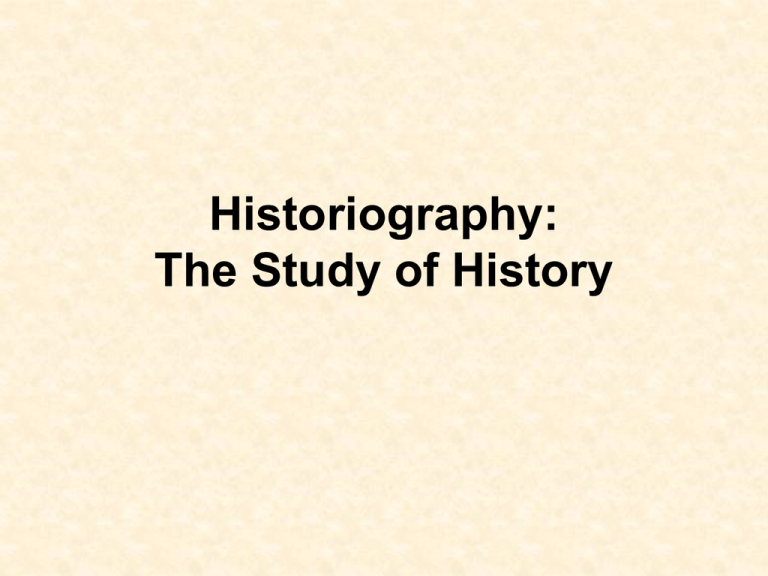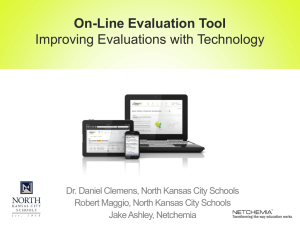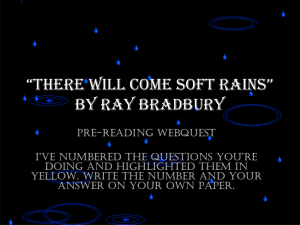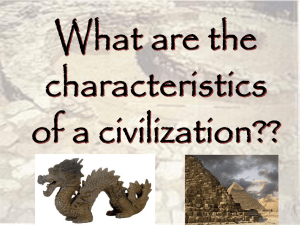Historiography- US2H
advertisement

Historiography: The Study of History DO NOW • What is history? • Why is it important to study American history? History vs. Historiography • History- Interpretation of past events • Historiography- Study of history • But how does one learn about and study history? Sources of Historical Information • Objects: Artifacts, Architecture, Human Remains • Text Sources: Primary, Secondary, and Tertiary Artifacts • Any object that was created during a certain time period. • Ex) tools, clothing, pottery, buildings, bones, weapons, jewelry, technology, art, etc. What are the pros and cons of using artifacts to learn about history? Artifacts: Pros and Cons • Fill in the missing pieces left by primary sources • Can tell us about societies without a written language or with little surviving primary sources • Can prove primary sources true or false • Often difficult to tell exactly what an artifact is and how common it was • Can be difficult to determine which civilization the artifact belongs to if many lived in the same area simultaneously Example of a Historical Mistake Corrected by Artifacts: • Until recently, historians assumed that Greek and Roman statues were pure white to express simplicity, elegance and purity • But, when several sculptures were discovered with eyes painted in, chemical testing revealed that both Greek and Roman sculptures were brightly painted, even gaudy. The paint had simply worn off over time. Primary Sources • Texts created during the historical period that is being studied What are the pros and cons of using primary sources to learn about history? Primary Sources: Pros and Cons • Allow historians to see straight into the culture they are studying • Can be about a wide variety of events, issues, and ideas • Reveal emotions, thoughts, motivations, and fears of people of the past • Can be difficult to understand • May not be accurate or may be biased • Ideas may vary • Need many primary sources to gain a complete picture of an event/person/era Primary Source Example: Quoted from Christopher Columbus, 1493 “…When the Admiral went to the Rio del Oro, he saw three mermaids which rose well out of the sea...they were not as beautiful as they are painted though they have something of a human face." Did Columbus see mermaids? Well, it’s sort of like a mermaid… Primary Source Example: William McKinley Obituaries, 1901 “His place is secure in his country’s history, and with the martyred Lincoln, his memory is forever enshrined in the hearts of the people.” –Virginia Gazette “He is one of God’s noblemen. He is a clean man, and honest man, and a great man.” – Gov. Chandler of Georgia • Why did some have such a high esteem for McKinley after his death? Do these accounts give an accurate picture of McKinley? Other Primary Sources on McKinley “Now his death and the way in which he met it has shamed those who called him weak, an oppressor and tyrant abroad, a conspirator against rights and liberties at home.” – Anonymous, Public Opinion, 1901 “He died at an hour that was friendly to his fame.” – Harry Thurston Peck, 1906 “The future historian, if free from prejudice and plutocratic influence, will stamp McKinley as the pliant tool of trusts and monopolists.” – Anonymous, Mother Earth, 1907 Most people today don’t consider him one of the greats… Secondary Sources • Secondary sources– Interpret primary sources – Written much after the event/time period What are the pros and cons of using secondary sources? Secondary Sources: Pros and Cons • Can make primary sources easier to understand • Often gather many primary sources in one place to give a larger perspective • Author’s point of view and primary sources used can be biased • Secondary sources may be missing valuable information. Secondary Source Examples: Differing Views on Reconstruction “A black skin means membership in a race of men which has never of itself succeeded in subjecting passion to reason, has never, therefore, created any civilization of any kind. To put such a race of men in possession of a state government in a system of federal government is to trust them with the development of political and legal civilization upon the most important subjects of human life, and to do this in communities with a large white population is simply to establish barbarism in power over civilization. - John W. Burgress, Professor of Political Science and Constitutional Law, Columbia University, Reconstruction and the Constitution, 1902. “The image of the black Reconstruction politician as ignorant and impoverished distorts the historical record. The vast majority were literate, having learned to read and write in schools for free blacks, secretly as slaves, in the Union army, or in institutions established after the war to educate freed people. Some attended the new black universities-among them, Howard, Lincoln, Shaw, and Alcorn …” - Eric Foner, Professor of American History at Columbia University, Forever Free: The Story Of Emancipation And Reconstruction, 2005. So how do we use sources to understand history? • Read all sources critically and skeptically • Look out for bias • Consider what the author thought happened and compare it with other documents • Beware of consensus- it does not always mean truth • Interpret each document for yourself * Always use a variety of sources in order to understand an event/person/era Acronym for Analyzing Primary and Secondary Sources: • Always consider SOAPS: – Speaker – Occasion – Audience – Purpose – Subject Consider: • What sources might you use to study life in the late 1800s and early 1900s? Today? Modern Sources • NPR, “For Biographers, the Past is an Open (Electronic) Book” Historiography Activity: Effects of the Great Chicago Fire (1871) • Work in your group to analyze 1 secondary source, 1 primary text source, and 1 primary visual source in attempt to uncover the effects of the Great Chicago Fire • Be ready to explain to the class the effects seen in each of your sources











